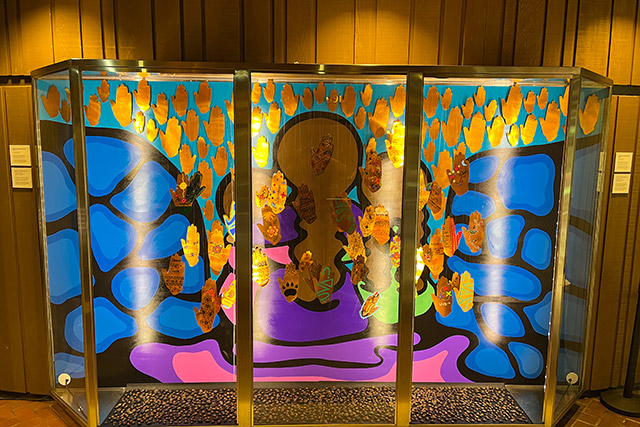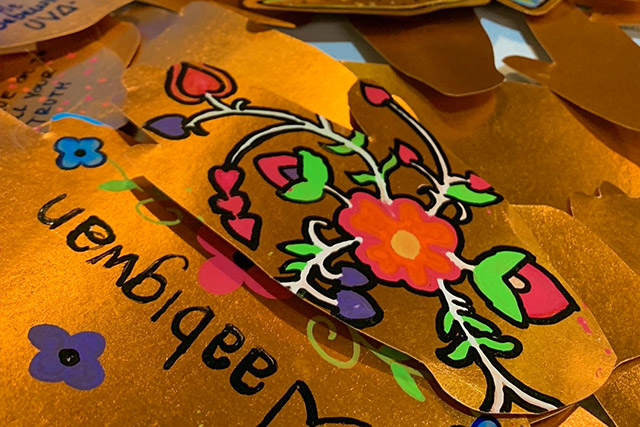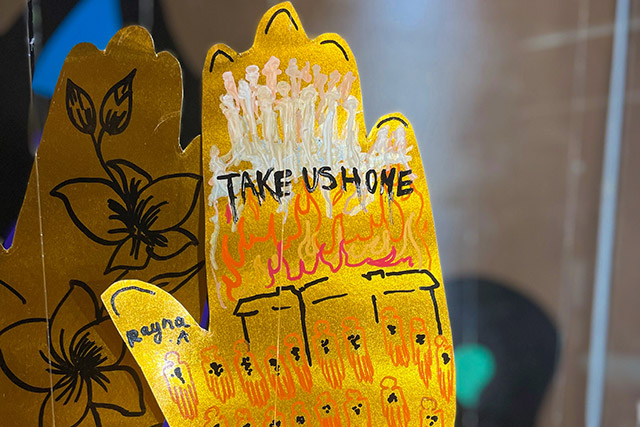Visual Voice: Students from Children of the Earth High School create an art piece at Lower Fort Garry to commemorate residential school survivors
Lower Fort Garry National Historic Site
Students from Winnipeg’s Children of the Earth High School (COTE) have created a focal point where visitors to Lower Fort Garry National Historic Site can contemplate the legacy of residential schools and what reconciliation means to them.

Photo: Parks Canada.
The piece, which was facilitated by Parks Canada, pulls inspiration from the more than 500 orange, paper handprints the agency gathered at Indigenous-led events in 2022, including Indigenous Day Live and National Day for Truth and Reconciliation. The handprints, many of which featured names of loved ones affected by the residential school system, were hung inside a painted tipi at outreach events and at Lower Fort Garry National Historic Site during the operational season. Seeing how impactful these pieces were, Parks Canada wanted to draw on their significance to help tell a broader story of reconciliation, reflection, and resilience.
Over the course of six months, the students from COTE created a concept with the help of their art teacher, Cynthia Flett, to commemorate and honour residential school survivors. They decided to call the piece “Family,” feeling it was important for the piece to reflect the rebuilding of connections with loved ones. The large panels in the background feature a woodlands-style painting of a mother with her children, a recreation of a piece by former COTE student Christina McKay. Its bold purples and blues provide depth for the golden hands that dangle from the ceiling, adorned with painted artwork that convey Cree and Anishinaabe teachings important to the students and to the message of rebuilding family. The rocks at the bottom of the display represent the unmarked graves of the many children who never came home from residential school.


Photo: Parks Canada.
“It’s about bonds and family. And even after everything our ancestors have been through, they’re still tightly connected,” says Hailey, one of the 50 students who helped create the large-scale piece.
For Dameon, the piece means something slightly different. “For me, it represents if you’re taken away from somewhere you’re not used to that there’s always a piece of home that’s always going to be a part of you.”
They both agree art can help tell the stories of Indigenous experiences and culture in an accessible way and open discussions about the realities of Canada’s history. It’s also inspired them to continue to use art as their own voice, which can be heard by all those that see their work.
The group of student artists who worked on the piece are from COTE’s OMAZINIBII"IGEG: Indigenous Artist Collective. OMAZINIBII'IGEG is an Anishinaabe word that translates to "People Who Paint." They are a group of Indigenous youth who work together to support each other's growth as artists. The artists produce original traditional and contemporary Indigenous art that reflects their understanding of the cultural teachings they receive at COTE from the school’s cultural support teacher Connie West Buck, guidance counsellor Elaine Mayham, and history teacher Sharon Sky. Their artwork is featured on greeting cards, prints, calendars, mugs, apparel, and more. Proceeds from sales of these items go back to the Collective to allow all members access to quality fine art supplies. To learn more about the program and see other works, visit their blog or follow their Instagram page.
- Date modified :